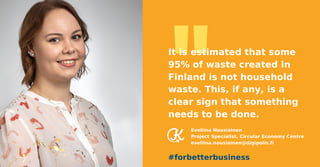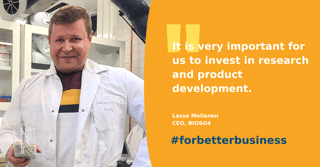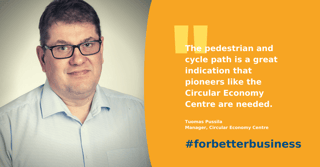On the Koululaisenpolku, a pedestrian and cycle path in Kemi, the cyclists pedal on Europe's first circular economy pedestrian and cycle path. In connection with the repairing of the pedestrian and cycle path, a unique circular economy innovation experiment was conducted, coordinated by the Circular Economy Centre/Digipolis.
In the structure of the path, different types of circular economy products were tested, and the properties of the materials were compared with each other, and real-time frost measurements were made.
“The pedestrian and cycle path is a great indication that pioneers like the Circular Economy Centre are needed in the circular economy. Different types of materials can be tested in the pedestrian and cycle path and the measurements made by Lapland UAS give us more information about, among other things, the effects of ground frost and the load-bearing capacities of the materials” says Tuomas Pussila, the manager of the Circular Economy Centre.
In addition to traditional sand, three industrial by-product materials were tested in the filter structure of the pedestrian and cycle path during the light traffic renovation building contract: Stora Enso's bottom ash, Outokumpu's slag insulation Okto and Ecolan's Fill-R fly ash product. Comparative information and instructions for use were obtained from the materials and their use.
Circular economy materials are suitable for road construction
The project was useful, according to Heikki Lämsä, the Regional Manager of Veljekset Toivanen, who carried out the work contract.
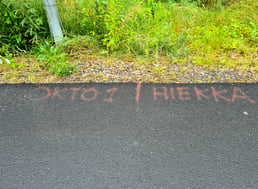 “Okto has good qualities and is easy to use. Fill-R is very easy to compress, and our machine operator
“Okto has good qualities and is easy to use. Fill-R is very easy to compress, and our machine operator
commented that it is like playdough to shape. Its use only makes economic sense when the production facility is close by. The problem with bottom ash is dustiness and slow accumulation, but it is otherwise a sand-like construction material. During the project we gained knowledge about how the road can be built with materials other than traditional soil materials,” says Lämsä.
A smart road readiness has been built into the 160-metre-long pedestrian and cycle path.
The innovation experiment was carried out by the Circular Economy Centre/Digipolis and Lapland University of Applied Sciences with co-financing from the Regional Council of Lapland.
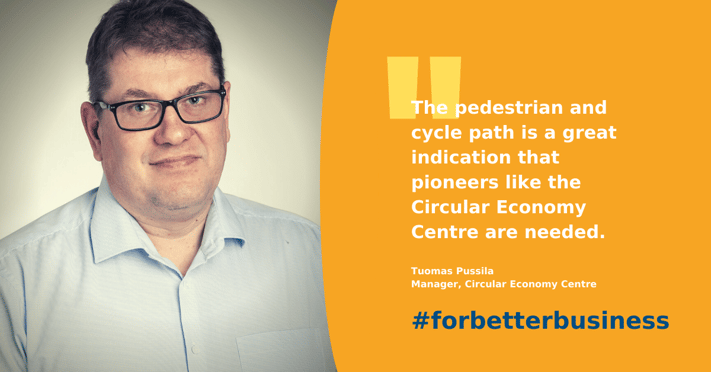
TEXT AND IMAGES: SOILE SUVANTO

-1.jpeg?width=3673&height=2587&name=koululaisenpolku2%20(1)-1.jpeg)

